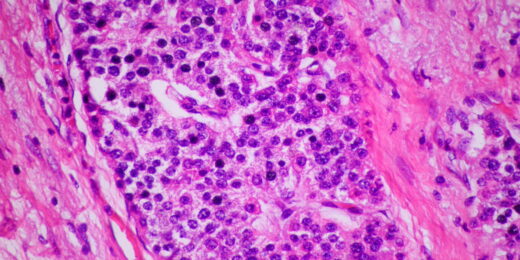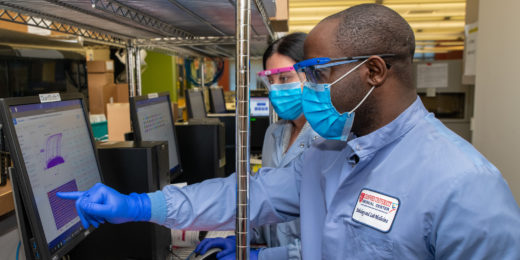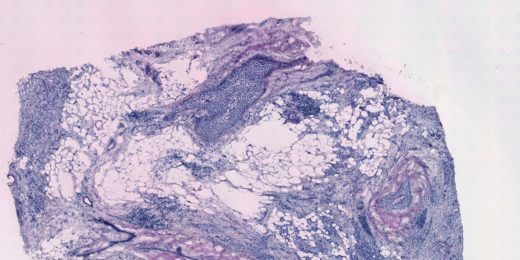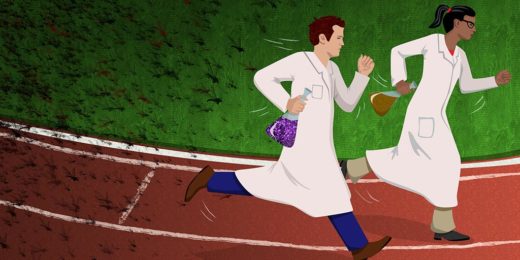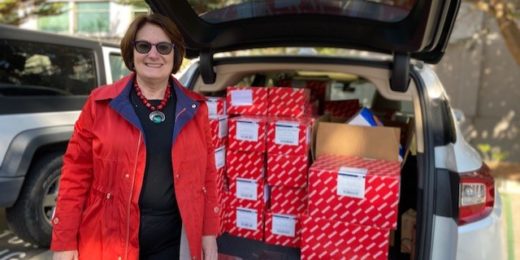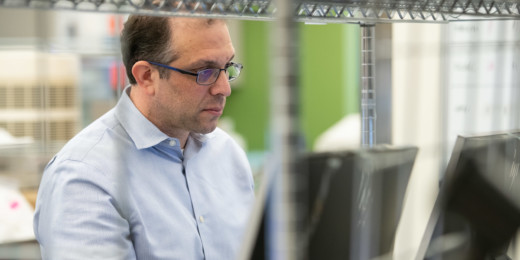The ultimate goal: a vaccine with coverage so broad it can protect against viruses never before encountered.
Category: Pathology
The hunt for a vaccine that fends off not just a single viral strain, but a multitude
Stanford Medicine researchers are designing vaccines that might protect people from not merely individual viral strains but broad ranges of them. The ultimate goal: a vaccine with coverage so broad it can protect against viruses never before encountered.
New AI tool for pathologists trained by Twitter (now known as X)
Stanford Medicine researchers create a new AI-powered algorithm that analyzes pathology images based on data from Twitter, now known as X.
A more complete imaging technique could personalize cancer treatment
Stanford Medicine scientists devised a cancer imaging technology that opens doors to new research questions and precision medicine.
mRNA medicines: Looking back, and a look forward
Stanford Medicine experts discuss the past successes and future potential of mRNA as a new type of medicine or treatment.
Catalyst’s newest cohort spotlights Stanford innovation
Stanford Medicine's Catalyst program, which aims to accelerate impactful health care innovations, launches a new cohort.
Runaway immune reactions cause long COVID breathing problems
Researchers at Stanford Medicine have investigated the mechanism of pulmonary fibrosis caused by long COVID.
Endemic: What it might mean for masks, COVID-19 shots and more
Stanford experts discuss what ‘endemic’ means in the context of biology, masking, vaccines, and mental and behavioral health.
COVID-19 lab manager came to ‘where the fire is burning’
Obadia Mfuh Kenji joined Stanford after the pandemic's first surge in May 2020, overcoming challenges to help deploy COVID-19 testing.
How Stanford became a hub for COVID-19 testing
Stanford Medicine’s early development of testing for COVID-19 infection and antibodies helped guide government responses and stem local spread of the virus.
An ancient virus might have made our hearts bigger
A Stanford-led study finds that remnants of an ancient viral infection may be the reason humans and other primates evolved to have larger hearts and bodies.
‘Instagram-like filter’ labels molecular details in tumor images
Scientists created an algorithm that analyzes a cancer biopsy and pairs spatial information with gene expression to better understand the disease.
The race for a COVID-19 vaccine: What’s ahead
A Stanford microbiologist describes the invigorating, yet sobering race to develop an effective vaccine against COVID-19.
Stanford community gathers resources in support of COVID-19 testing
Stanford researchers combed their own labs, tapped contacts and worked with outside companies to ensure the coronavirus testing efforts would continue.
Stanford ramps up coronavirus testing to help other hospitals
The Stanford Clinical Virology Laboratory is ramping up capacity for its coronavirus diagnostic test, which can deliver results in 24 hours.
Lessons about medicine and mortality from a pathology class
"It matters to me, when holding a specimen or discussing a patient, that I not lose sight of the story and life behind the disease," writes Stanford medical student Lauren Joseph.




